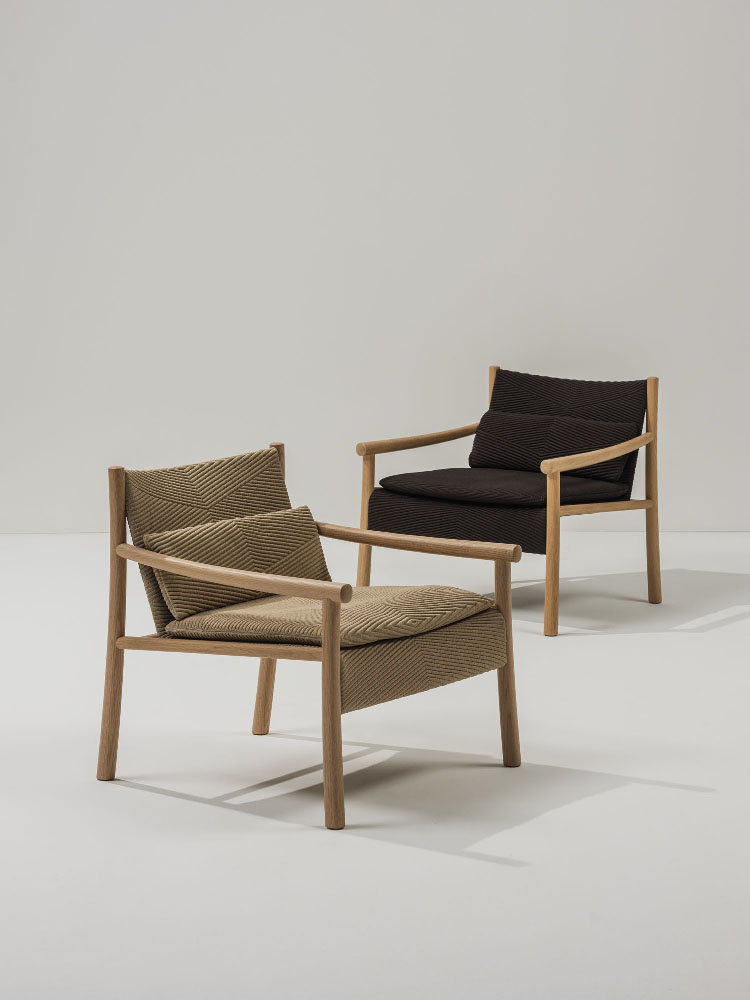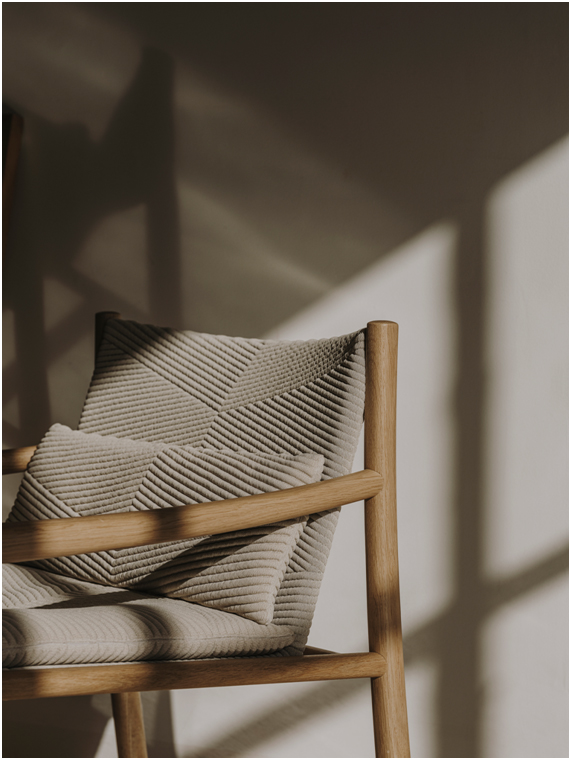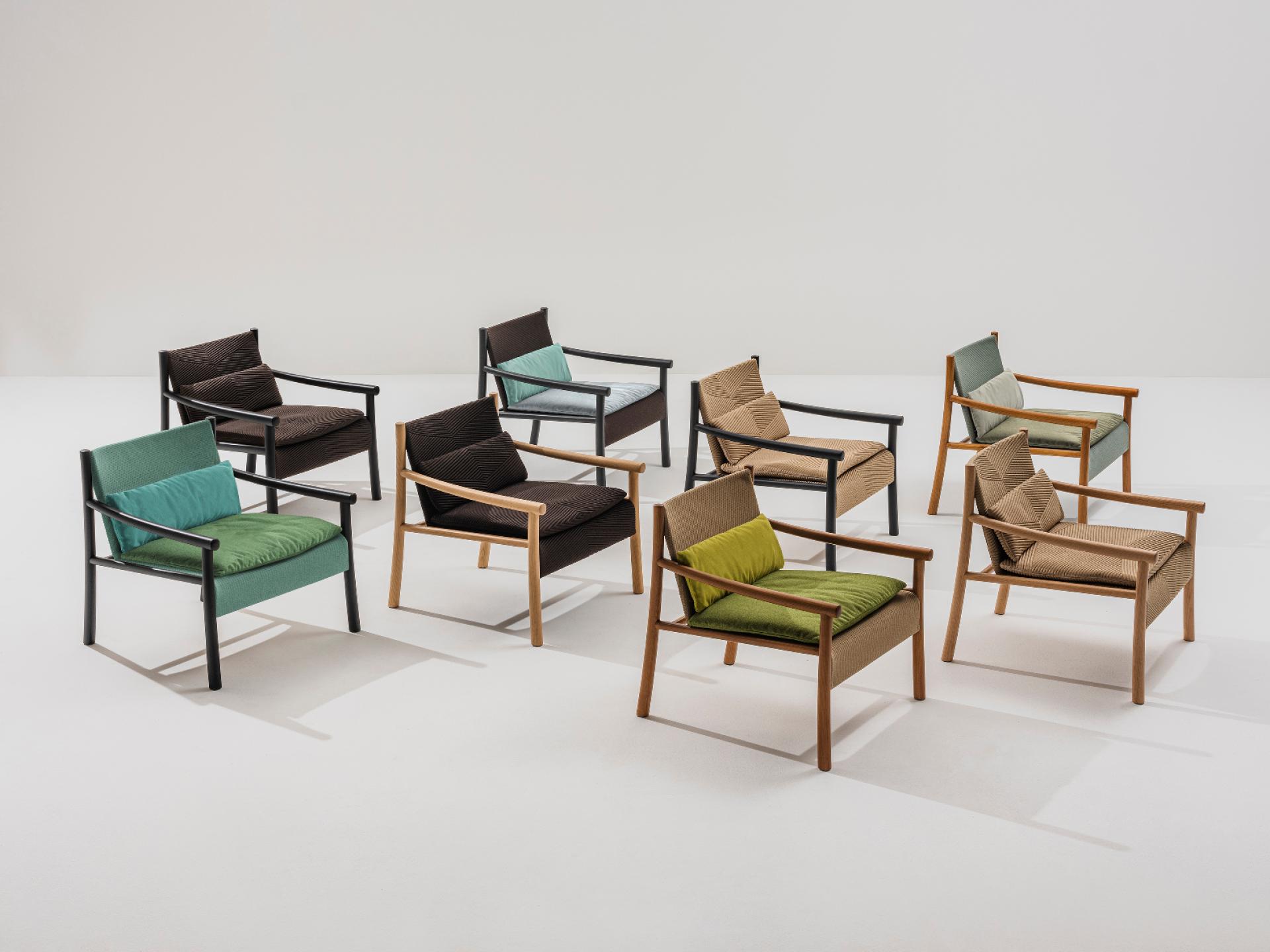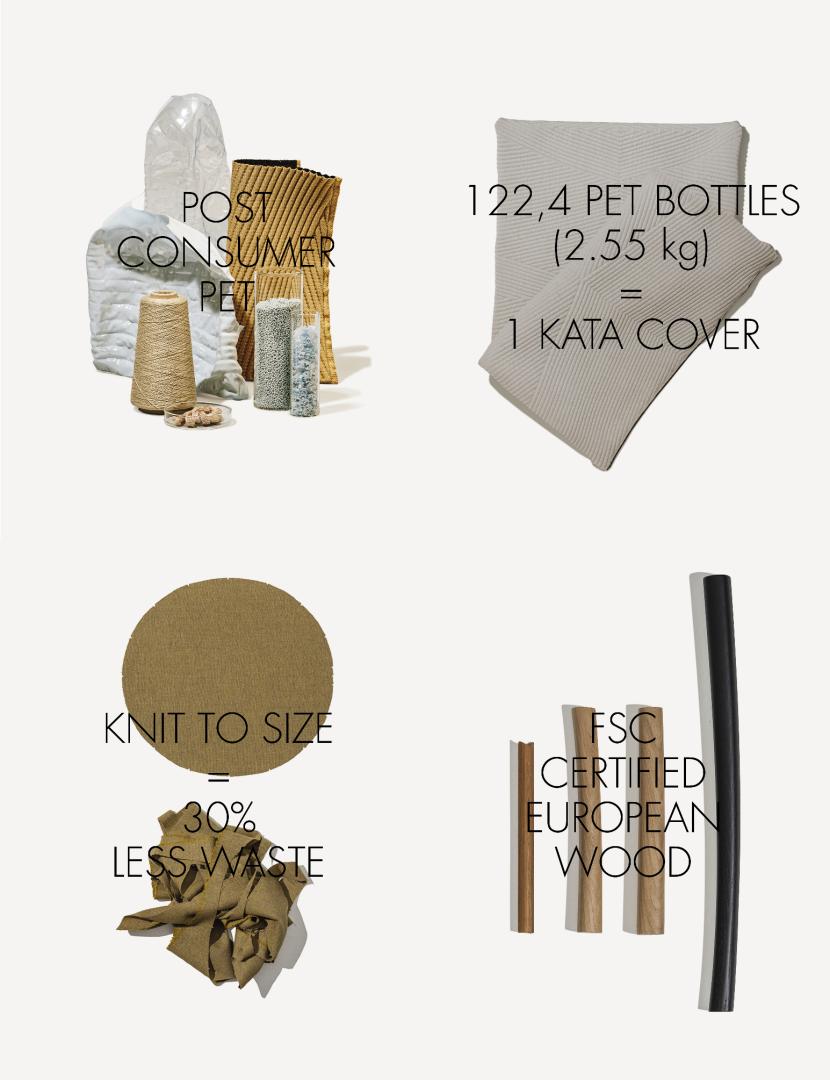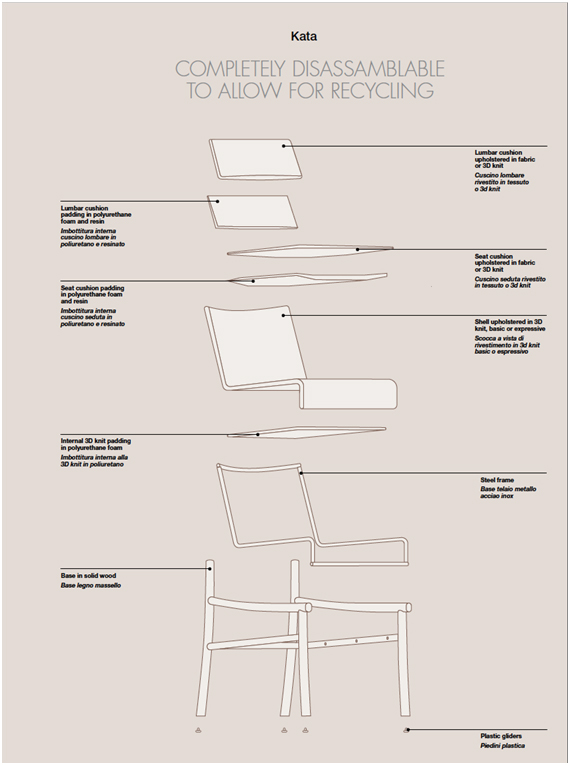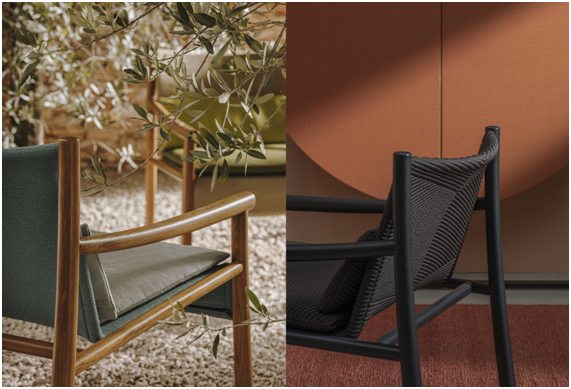Kata wood lounge with 3D textile
Basic information
Project Title
Full project title
Category
Project Description
The Kata lounge unites traditional craftsmanship and soft technology.
It takes inspiration from artisan-made wood and woven straw chairs but re-imagines the typology using contemporary, sustainable solutions in an expression that’s both graphic and warm.
Kata is designed with sustainability at its core and made locally.
A FSC certified wood frame supports a soft 3D textile made from post-consumer recycled polyester. The textile is custom knitted without leftovers - a material reduction of 30%.
Project Region
EU Programme or fund
Description of the project
Summary
Lightweight in form and environmental footprint, Kata takes inspiration from artisan-made wood and woven straw chairs and re-imagines the typology using contemporary technology and sustainable solutions in an expression that’s both graphic and warm.
Local production, wood, and high-tech european 3D knitting were used to create a lounge chair that juxtaposes an evocative gesture, material presence and minimal silhouette, softness and strength, tradition and technology.
Key objectives for sustainability
We aimed to create a design that does not follow fast fashion trends, but rather a design that will last for many years. Kata´s design is connected to tradition but also looks to the future in a refined, timeless shape that is made with new technology.
In terms of sustainability, the project is designed with a 360 degree focus on sustainability from the design itself, its production, materials, packaging, transparent communication, and re-adaptability for a 2nd Life, and recyclability at the end of its life span:
Design:
- Designed to be lightweight with the minimum of all materials, thus lowering the material footprint and shipping costs
- Allow for complete disassembly for replacement, repair and recycling. Disassembly is simple (just screws and zippers) and is thus easily recycled.
Production:
The 3D knit is made in a way that is perfectly fit to the frame without extra leftover material like in traditional upholstery methods. This reduces wasted textile by 30% compared to traditional methods. The chair is produced in Europe.
Materials:
- The knit cover is created from recycled polyester made from post-consumer plastic that is converted into durable and lightweight fibers.
- The frame is made with FSC certified wood source in Europe.Oak for indoor use and black locust (robinia) for outdoor use. We specifically avoided teak and other tropical woods of questionable origin & environmental impact.
- All materials are 100 % pure and can be disassembled for recycling.
Packaging:
- Lightweight cardboard is used to reduce shipping weight and energyneeded to transport. Cardboardboxes are made without glue so theycan be disassembled and recycled. Cardboard supports—no tpolystyrene—are used to fix the furniture within the box for safe transport.
Key objectives for aesthetics and quality
Our goals were to design a contemporary, warm, and haptic product that bridges tradition and the future by reinterpreting pre-industrial artisan references with a sustainable industrial technology.
The result is a design with a timeless feel - calm, not strident. The texture is not just visually pleasing, but thanks to the embedded padding also feels soft and rich. The gentle curves and broad surface invite people to relax and the suspended textile adapts perfectly to the body.
The colors and 2 textures offer adaptability to different expressions of space, from coastline to mountains, from modern and minimal to rich and traditional, from indoor to outdoor, from contract spaces to domestic habitats.
Key objectives for inclusion
The chair can be used by everyone.
Results in relation to category
This project is a continuation of many years of our studio´s approach to design which centers on bringing a holistic, human, and essential approach to product design. Our practice is increasingly focused on reducing the environmental footprint.
We strongly believe that there are no easy answers but rather an obligation to strive for continual improvement and evolution. The complexity of finding solutions for the climate crisis requires deep knowledge paired with a vision that brings both ambition and reality together– a strategy that as designer we bring to our clients in form of consultancy, communication, and product design, acting as an accelerator of ideas and providing inspiration for other parts of our industry.
How Citizens benefit
Compared to single-use plastics, as furniture designers our environmental impact – especially with plastic – is small. But a critical part of our role as designers is to serve as a kind of beacon: to highlight problems to end users and show possible solutions towards a better future.
In this sense, the concept behind the environmental focus of Kata´s development highlights the feasibility of reconsidering waste as a precious raw material producing a long-lasting aesthetically beautiful product. We hope this will act as an incentive to improve recycling systems and redefine the idea of waste from problem to opportunity. It gives recycling a tangible sense to end users, and a destination to the recycled material.
Innovative character
The texture in the textile is made in a single process and with a single material – the “skin” and “soft filling” are all polyester, thus it is recyclable in one piece. The knit is also produced custom-fitted without wastage and ‘just-in-time,’ thus reducing material inventory.
Aside from this, much too often technology prioritizes technical possibilities, technical expression, and fast obsolescence over softer human needs. Therefore a big part of the innovation is to show how high-technology can be used to produce products that emphasize slowness, humanity, tradition, and sensations of wellbeing.

